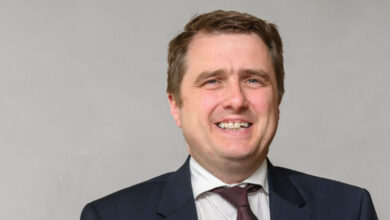Study shows large disparity in early school leaving between north and south

Early school leaving is between two and three times higher in Northern Ireland than it is in the Republic, a new report has shown. Students from more disadvantaged backgrounds were also found to be more likely to leave school early in the North.
A report by the Economic and Social Research Institute (ESRI) published in April 2022 has found that the proportion of 16- to 24-year-olds who leave school with at most a lower secondary qualification stands at 14 per cent in Northern Ireland, compared to 6 per cent in the Republic. The finding comes as part of the report, A North-South Comparison of Education and Training Systems: Lessons for Policy, the first study of its kind that compares the differing education and training systems north and south, from primary, to third-level.
The report states that this is “concerning” due to the fact that early school leavers are found to be more likely to be unemployed or in low-wage work and potentially insecure jobs later in life. Students from disadvantaged backgrounds in Northern Ireland were also found to be more likely to leave school early than their southern counterparts, highlighting “an important difference” between the two educational systems in Ireland, where “it is likely that academic selection in Northern Ireland and the success of the Delivering Equality of Opportunity in Schools (DEIS) programme in [the Republic of] Ireland in retaining students in education are strong contributory factors”.
Academic selection in Northern Ireland is deemed to have “significant consequences for the social and ability profile of schools and for young people’s post-school choices and aspirations”. Relatedly, students from disadvantaged backgrounds were found to be more likely to be clustered into certain schools within the northern system when compared with the southern system. Those who are funnelled into non-grammar schools were found to have “low educational expectations relative to those who attend a grammar school, particularly for boys from socio-economically disadvantaged backgrounds”.
The proportion of graduates was found to be the same in both jurisdictions, but Northern Ireland was found to have a much smaller rate of people completing post-secondary non-third level qualifications, while post-Leaving Certificate (PLC) courses have risen in popularity in the Republic. Ten per cent of northern school leavers attain such qualifications while 30 per cent of their southern counterparts do so. This is deemed to be “an area where cooperation across the island of Ireland may be useful”. This lack of take-up can be partly attributed to a perception of further education as a second-best when compared with higher education qualifications, a perception that the report attests to finding in both jurisdictions according to the stakeholders interviewed.
Northern Ireland was found to have a much smaller rate of people completing post-secondary non-third level qualifications, while post-Leaving Certificate (PLC) courses have risen in popularity in the Republic. Ten per cent of northern school leavers attain such qualifications while 30 per cent of their southern counterparts do so.
The report does note, however, that “important differences occur across the two jurisdictions in terms of the configuration of post-school opportunities within the broader educational landscape”. Those interviewed were said to have highlighted recent policy developments in the Republic of Ireland as having the potential to change this perception, but respondents in the North emphasised the “challenges of having a multiplicity of providers and duplication of courses”.
While existing research and industry surveys have already highlighted the ‘high stakes’ nature of the assessment systems in both jurisdictions, with a heavy reliance on final exams for overall grades, stakeholders were said to have raised concerns to the ESRI around the secondary system preparing students for exams “rather than for the world of work and adult life”. In the Republic, plans to change this are afoot with the recently announced Leaving Certificate reforms setting a goal of no final exam accounting for any more than 60 per cent of a student’s overall grade.
Wages were found to be significantly higher in the Republic than in Northern Ireland at all levels of education. The report states: “Higher returns to education can incentivise individuals to invest in their education and may in part be driving the low levels of attainment in Northern Ireland. Lower returns to education in Northern Ireland may also be reflective of lower productivity levels in Northern Ireland.”
Stakeholders interviewed by the ESRI were said to have highlighted examples of good practice in the case of cross-border cooperation, with common examples including teacher education initiatives through the Standing Conference on Teacher Education North and South (SCoTENs), strong links between the inspectorates, the Middletown Centre for Autism, and the Joint Peace Fund. However, the report does note that “more generally, stakeholders highlighted that in many areas north-south links are ad hoc in nature and based on individual relationships or specific projects and initiatives, thus making sustained co-operation more challenging”. Stakeholders were nonetheless said to be willing to engage on more substantive issues with potential for cross-border collaboration.
Given the shared challenges across both jurisdictions in “trying to counter educational disadvantage and create an inclusive educational system for students with special educational needs”, the ESRI suggests that these could be the starting points for discussions centred on future cooperation.
Speaking at the launch of the report, Taoiseach Micheál Martin TD said: “Today’s ESRI research adds significantly to the evidence and understanding we have on how our education systems serve students, families and communities on this island; how we could learn from each other north and south on education delivery and reform; and how we can do more together to enhance educational experience and outcomes for all.
“I believe these need to be central concerns for how we work through the Good Friday Agreement in the time ahead.”





